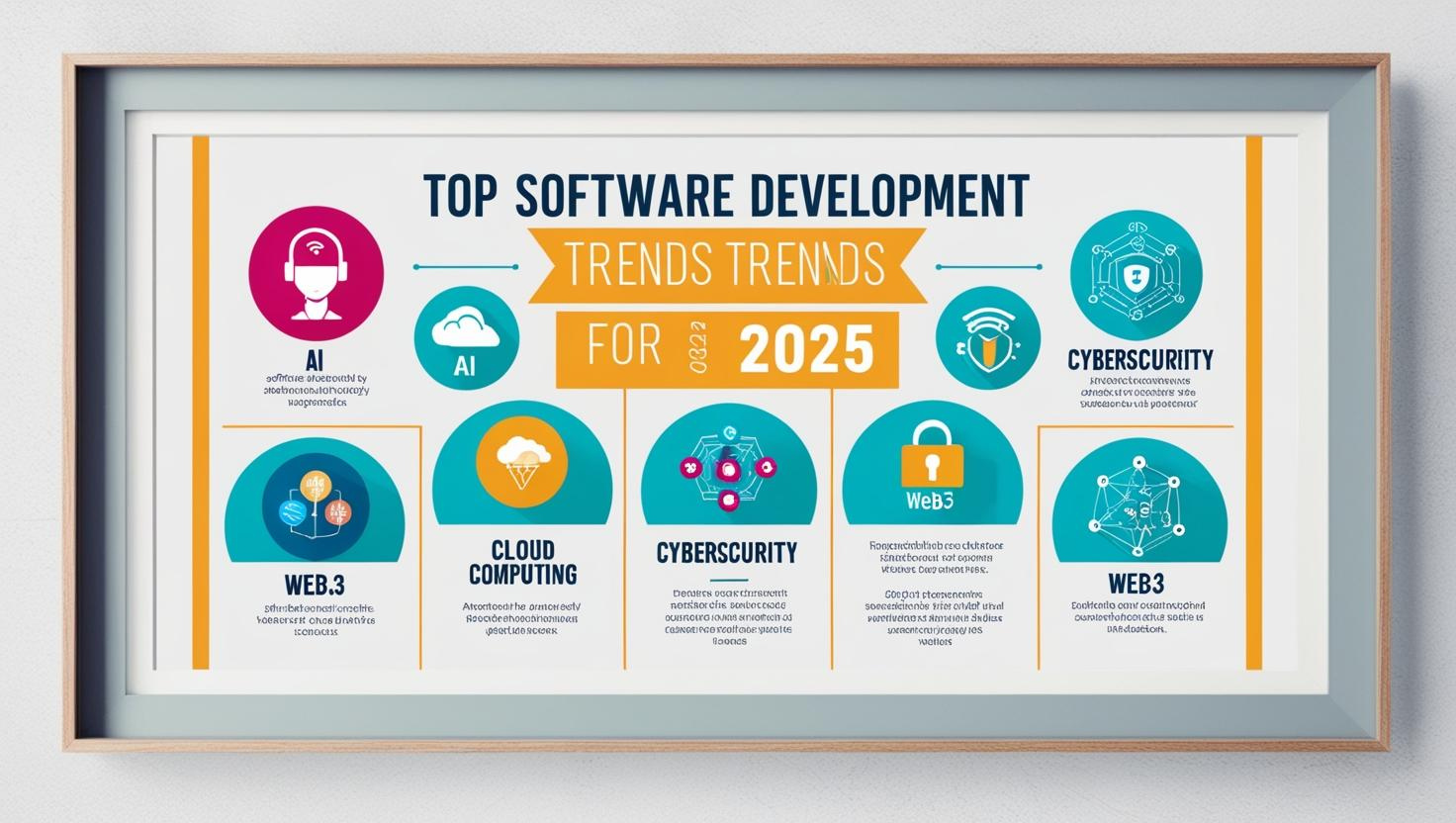The Best Software Development Trends to Watch in 2025
The software development trends of 2025 are all about building for the future, with a strong emphasis on adaptability
and resilience. As the speed of technological change shows no sign of slowing down, organizations require software
solutions that can evolve with it, quickly incorporating new innovations. Expect to see a rise in cloud-native
architectures, microservices, and data-driven development practices. This year will also see a greater focus on security
and privacy, with developers incorporating robust security measures into software from the initial design phase. These
trends will enable businesses to not only stay relevant but also thrive in an increasingly unpredictable technological
landscape. By prioritizing these future-focused trends, businesses can ensure their software remains cutting-edge and
continues to deliver value for years to come.
1. Rise of Artificial Intelligence and Machine Learning
Artificial intelligence (AI) and machine learning (ML) are no longer futuristic concepts; they are rapidly becoming
essential components of modern software development. In 2025, we'll see an explosion of AI-powered tools that can
automate repetitive tasks, assist with code generation, and even proactively identify potential bugs. This means
developers will be able to focus on more complex and creative aspects of their projects. The increasing
accessibility of pre-trained ML models and cloud-based AI platforms is also democratizing these technologies, making
them available to businesses of all sizes. This surge in AI and ML integration is not just about efficiency; it’s
about creating more intelligent, adaptive, and personalized software experiences for users.
2. Blockchain Technology Beyond Cryptocurrencies
While blockchain technology initially gained fame through cryptocurrencies, its potential extends far beyond the
realm of digital finance. In 2025, expect to see blockchain being leveraged for a variety of applications, such as
secure supply chain management, transparent voting systems, and decentralized data storage. The inherent security
and immutability of blockchain make it an ideal solution for applications that require high levels of trust and data
integrity. Furthermore, the ongoing development of blockchain platforms is making it more accessible to developers,
enabling faster and easier integration into a wide range of software projects. This trend signifies a significant
shift towards more secure, transparent, and decentralized digital ecosystems.
3. The Continued Growth of Remote and Hybrid Work Models
The shift to remote and hybrid work models, greatly accelerated in recent years, is now a firmly entrenched part of
the software development landscape. In 2025, we will continue to see improvements in the tools and processes that
support distributed teams, from enhanced project management software to better collaboration platforms. Companies
will increasingly leverage these setups to access a wider talent pool, while also offering employees flexible work
arrangements. This adaptation to remote work is not just about convenience; it's about building a more inclusive and
dynamic work culture, and a more efficient and globally connected development community.
4. The Increasing Demand for Cybersecurity
With the ever-increasing reliance on software in all aspects of our lives, the demand for robust cybersecurity has
never been greater. In 2025, we’ll see a renewed focus on proactive security measures integrated into every stage of
the software development lifecycle. This means adopting secure coding practices, performing regular vulnerability
assessments, and implementing advanced threat detection systems. The rise in sophisticated cyber threats means
cybersecurity can no longer be an afterthought; it's an integral aspect of every successful software project. This
emphasis on security is not just about protection; it’s about building trust and ensuring the reliability of digital
services.
5. The Evolution of Cloud Computing
Cloud computing continues to evolve, becoming more versatile, powerful, and accessible. In 2025, we'll see a greater
emphasis on serverless architectures, edge computing, and hybrid cloud solutions. These advancements offer
developers more flexible and scalable options for deploying and managing their applications. The shift towards the
cloud is driven by a need for agility, cost-effectiveness, and the ability to handle large amounts of data. Cloud
technologies are not just about providing infrastructure; they are about empowering developers to build and deploy
sophisticated applications more efficiently and effectively.
6. Low-Code and No-Code Development
Low-code and no-code development platforms are democratizing software creation by empowering individuals with limited
coding experience to build their own applications. In 2025, we'll see these platforms become even more
sophisticated, enabling faster application development and increased business agility. This trend means that not
only will developers be able to focus on more complex projects, but also that businesses can rapidly prototype and
deploy custom solutions without relying on extensive coding resources. Low-code and no-code is about bridging the
gap between business expertise and technology, making software development more accessible to a wider audience.
7. Advancements in Front-End Development
Front-end development is constantly evolving, focusing on creating engaging, responsive, and user-friendly
interfaces. In 2025, we will see continued adoption of advanced JavaScript frameworks and libraries. Progressive Web
Apps (PWAs) and server-side rendering will also play a more prominent role in delivering improved performance and
user experiences. These innovations are aimed at blurring the lines between web and native applications, in order to
build rich, seamless interactions. The advancements in front-end development are not just about aesthetics, they're
about building more intuitive, accessible, and impactful digital experiences.
Conclusion
As we look start 2025, the software development landscape is exciting and full of opportunities. Developers who stay
informed about emerging trends such as AI, blockchain, cybersecurity, and cloud computing will be better equipped to
navigate these changes and succeed. By embracing new tools, technologies, and work models, developers can remain
competitive in an ever-evolving industry. Whether you're looking to advance your career or build the next big thing,
staying ahead of these trends will be key to your success.
